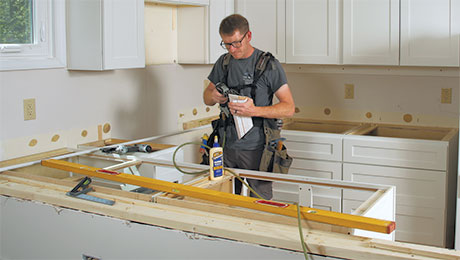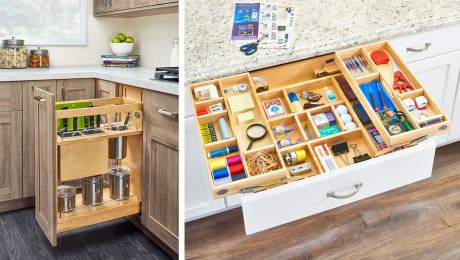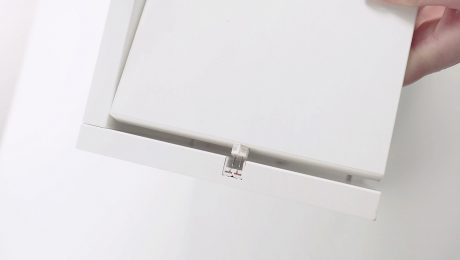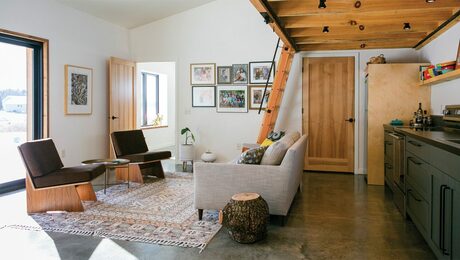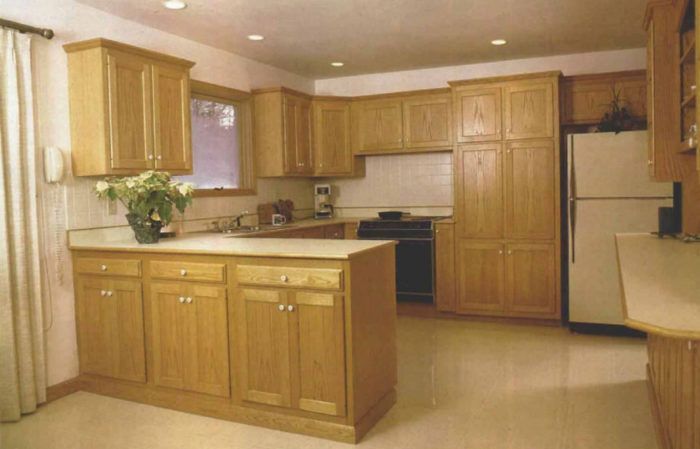
Synopsis: Refacing is a method of salvaging tired cabinets by applying new wood veneer to otherwise sound cabinet carcases and making new drawer fronts and doors. The technique is faster and costs less than making new cabinets. This author, an experienced kitchen contractor, explains how he does it. A sidebar describes the use of pressure-sensitive veneer.
By the time she called me, Caroline McCary had already decided that her 32-year-old maple kitchen had to go. Caroline had antiqued the cabinets to a dark green a few years earlier, and now she was tired of them. What she had in mind was a whole new set of cabinets.
Caroline runs a beauty parlor in her house and had heard about me from one of her customers. But the customer hadn’t mentioned the fact that I reface kitchens — just that I build new ones. In fact, Caroline and her husband, Robert, didn’t even know that refacing the cabinets in veneer was an option for them. But when I realized the cabinets were sound structurally, and the layout was sensible, I knew their kitchen was a perfect candidate for a veneer face-lift. And that would mean big savings for the McCarys.
I can make old cabinets look new for only two-thirds the price of new ones. What’s more, the veneering process is far less disruptive for the customer than tearing out existing cabinets and installing new ones.
There are other advantages with the face-lifting process: First, you’re recycling old cabinets, so you can feel good about taking some of the strain off the local landfill; and second, you’re reducing your customer’s exposure to the formaldehyde given off by the particleboard and plywood used in new cabinets. At the same time, a veneer face-lift is an opportunity for the homeowner to add some of those kitchen accessories that make life easier — things like self-closing door hinges, full-extension drawer slides or pull-out shelves and lazy susans.
The veneering process can transform a kitchen in a matter of a week or two. Specialized tools are few. And when applied with care, the veneer is both attractive and durable. Some of the work — like filling and sanding the face frames and finishing the new veneer — is done on site. Other work — such as making new doors, drawer fronts and end panels — takes place back in my shop. When all these elements are combined in the kitchen, the results can be dramatic.
Choosing veneers
Wood veneers of almost all native American hardwoods, and of some imported species, are available from many wood suppliers. Veneers come in a variety of widths, from 3/4-in. strips all the way to 24-in. wide sheets. Veneer is available in at least two preglued varieties — pressure sensitive and heat sensitive — as well as in the traditional types with no glue at all. I use heat-sensitive veneer, which I apply with a clothes iron, and I’ve found it is durable enough to withstand the wear and tear of normal kitchen activities. In fact, in 15 years of kitchen face-lifts, I have not had a single callback because veneer loosened or was torn off during normal use.
For more photos and details, click the View PDF button below:













